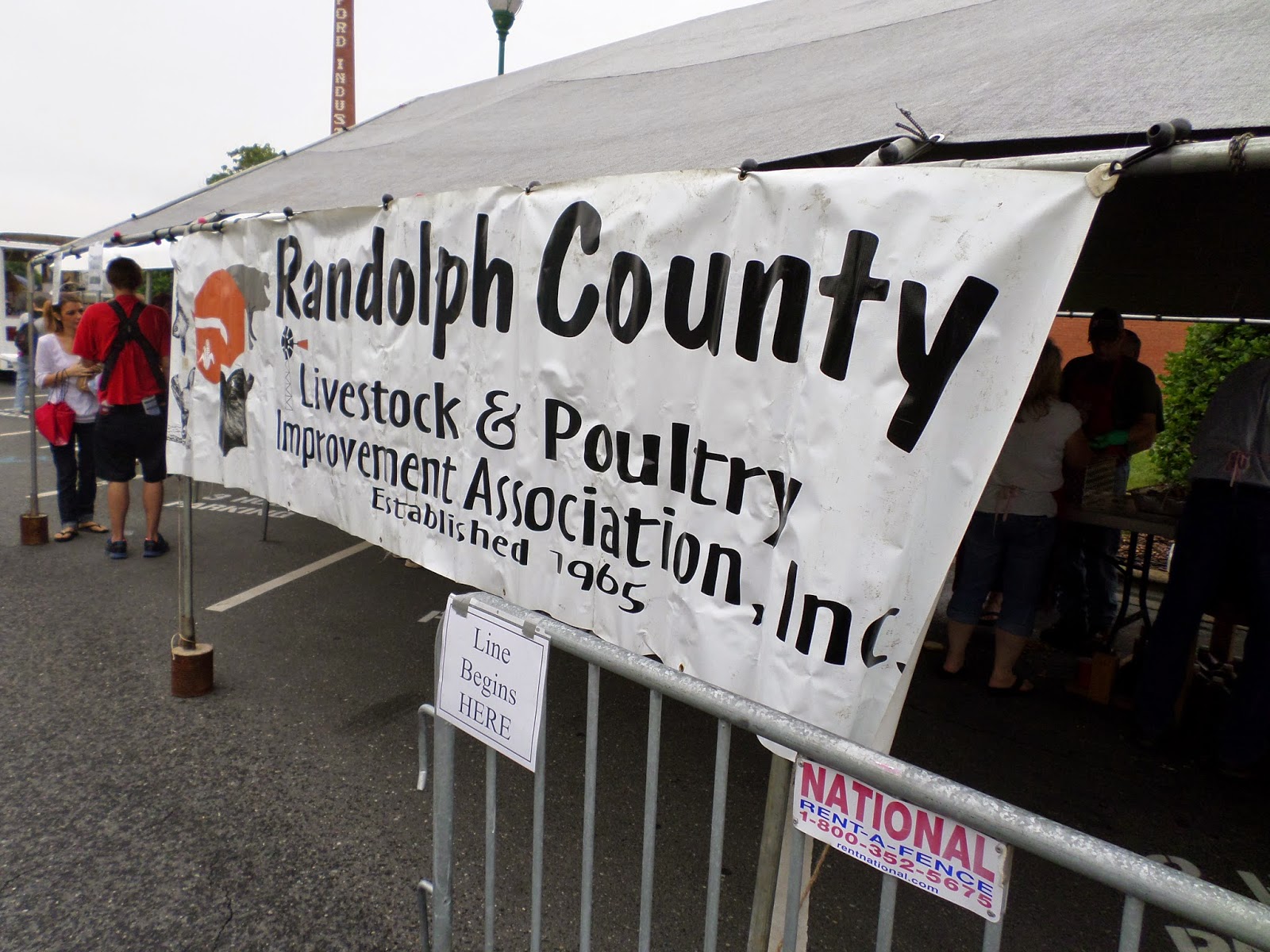Would you take a barbecue grilling class at a restaurant owned by a highly regarded chef and graduate of the prestigious Culinary Institute of America? When I had the opportunity to participate, the decision to sign up was easy (although it was also sweetened by a discounted registration fee). The class indicated the growing interest in personal grilling.
 |
| Lots of food on the grills were ready for tasting when the class began |
The class was held at Backyard Bistro, a family-owned restaurant in Raleigh, NC, well known for several signature dishes, including beef brisket slow roasted for 12 hours over hickory wood and St. Louis-style pork ribs dry-rubbed and also slow roasted. Three stations had been set up outdoors just outside the restaurant’s patio area: one was a custom-built open grill heated with charcoal briquettes, and another was a clamshell cooker fired by gas. The most intriguing grill had been made out of a trashcan for demonstrating smoking techniques.
 |
The simplest grill is made out of a
trashcan. |
The class was more a sampling class than a cooking class, although a chef at each station explained the advantages and disadvantages of the setup and heat source. The class favorite was clearly the homemade trashcan grill, and the distinctive smoke flavor imparted to food cooked in it attracted the most attention.
 |
Smoking box with hickory wood inside
the trashcan grill. |
The chef indicated that the trashcan grill had been built for less than $50 in supplies, including L-brackets, temperature gauge, circular steamer grates, and a smoking box for holding wood. At the bottom of the trashcan, holes had been drilled to let in air that kept charcoal embers slowly burning to heat and smoke hickory wood pieces in the smoking box set on the coals.
 |
Ribs prepared in the trashcan grill
were extremely flavorful. |
 |
Food smoked in the trashcan is
ready for sampling. |
Lots and lots of food items were grilled during the two-hour class: scallops, swordfish, shrimp, steak, beef brisket, chicken, pork ribs, and Portobello mushrooms. Veggies included corn, blanched potatoes, summer squash, and zucchini. In addition, pineapple basted in a mixture of brown sugar, butter, and cinnamon was on the grill to show how fruit can be part of a barbecue event.
The class was brief, and its instruction was basically only an introduction for someone interested in starting to grill. Anyone with grilling experience wouldn’t gain much except for enjoying the food that had been cooked. In fact, some seemed interested in only eating. However, the chefs did offer suggestions practical for the backyard griller:
- Don’t pre-soak wood being used to impart a smoky flavor to avoid smoldering it and changing the smoke flavor that would be otherwise produced.
- Use a smoking box for the wood (rather than placing the wood directly on the coals) so that the smoke is gradual.
- Sear meat on a hot cooking area initially to lock in flavor and juices.
- Move the meat after searing to a low heat area so that cooking continues slowly.
 |
One of the vehicles in
Backyard Bistro's fleet |
The class attracted more than 40 participants because Backyard Bistro is also acclaimed as a regional caterer. It has a fleet of “flame-wrapped vehicles and grills” for cooking on site. Its 40-foot “Big Rig” has four 3-by-5 feet grills (large enough to cook a whole 125-pound pig each) and has fed as many as 8,000 people with 16 buffet lines going at once. Joe Lumbrazo, head chef and owner, has been selected to cook for the governor at political events. What better crew of professional chefs to observe?
 |
| Joe Lubrazo discusses meat and vegetables cooked on gas-fired grill. |
 |
The buffet enjoyed
at the end of the class. |
The class was entertaining and provided information about grilling techniques and fuel sources. Watching the chefs demonstrate their pride and skill in preparing exceptional food on a grill obviously motivated the participants to improve their grilling techniques.
Grilled Pineapple
Although no recipes were provided as part of the class, this recipe is a good one for grilling pineapple.
1 fresh pineapple, peeled, cored, and sliced into one-inch rings
¾ cup dark brown sugar
1 tablespoon honey
¼ teaspoon ground cinnamon
3 tablespoons melted unsalted butter
Directions
1. Mix honey, butter, brown sugar, and cinnamon in bowl.
2. Add pineapple to bowl and spoon mixture over pineapple rings.
3. Place pineapple rings and mixture in plastic bag that can be resealed.
4. Seal bag and press to continue coating each ring.
5. Marinate overnight (but not less than 30 minutes)
6. Preheat an outdoor grill for medium-high heat and lightly oil the grate.
7. Grill pineapple for approximately 3 minutes per side. Remove when grill marks appear (and be careful to avoid burning sugar on pineapple).
Note: Makes about 12 servings.
 |
| Grilled pineapple that I prepared several days after the class using this recipe. |

















































